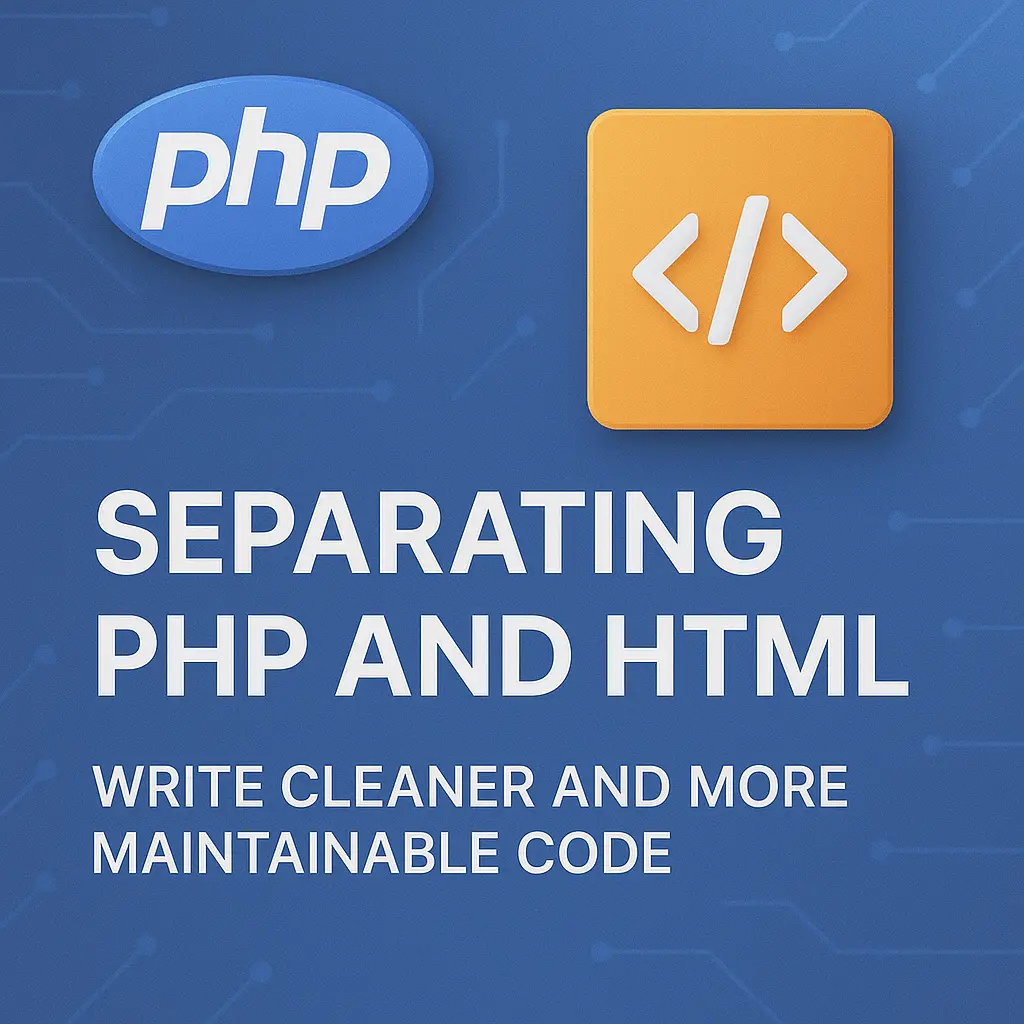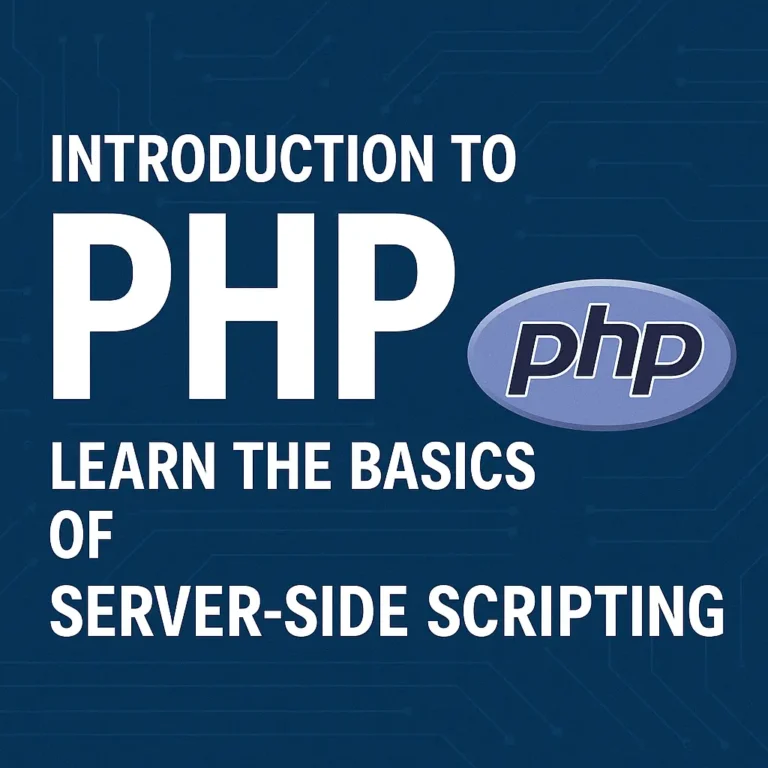Templating allows developers to keep their PHP code separate from HTML markup, making it easier to manage and update both aspects of a web application independently. In this comprehensive guide, we’ll explore the basics of templating in PHP, covering template fundamentals as well as advanced techniques for creating dynamic and flexible templates. Through detailed explanations and practical code examples, you’ll learn how to harness the power of templating to build scalable and maintainable web applications.
Template Basics
Template basics involve creating reusable HTML templates with placeholders for dynamic content generated by PHP. These placeholders are replaced with actual data when the template is rendered, allowing for dynamic content generation without mixing PHP logic with HTML markup.
Simple Template Example
<!-- template.php -->
<!DOCTYPE html>
<html lang="en">
<head>
<meta charset="UTF-8">
<meta name="viewport" content="width=device-width, initial-scale=1.0">
<title><?php echo $pageTitle; ?></title>
</head>
<body>
<h1><?php echo $heading; ?></h1>
<script>var rocket_lcp_data = {"ajax_url":"https:\/\/codersship.com\/wp-admin\/admin-ajax.php","nonce":"503dc7d5b1","url":"https:\/\/codersship.com\/php\/separating-php-and-html","is_mobile":false,"elements":"img, video, picture, p, main, div, li, svg","width_threshold":1600,"height_threshold":700,"debug":null}</script><script data-name="wpr-lcp-beacon" src='https://codersship.com/wp-content/plugins/wp-rocket/assets/js/lcp-beacon.min.js' async></script></body>
</html>
In this example, we have a simple HTML template (template.php) with placeholders for dynamic content such as the page title ($pageTitle) and heading ($heading). These placeholders will be replaced with actual data when the template is rendered.
Rendering the Template
<?php
// page.php
$pageTitle = "Dynamic Page Title";
$heading = "Welcome to my website!";
include "template.php";
?>
In the page.php file, we assign values to the $pageTitle and $heading variables and then include the template.php file. The placeholders in the template file are replaced with the actual data, resulting in a complete HTML page.
Advanced Templating Techniques
Advanced templating techniques involve using control structures, partials, and inheritance to create more dynamic and flexible templates.
Control Structures in Templates
Control structures such as if, else, and foreach can be used within templates to conditionally display content or iterate over arrays.
<!-- template.php -->
<!DOCTYPE html>
<html lang="en">
<head>
<meta charset="UTF-8">
<meta name="viewport" content="width=device-width, initial-scale=1.0">
<title><?php echo $pageTitle; ?></title>
</head>
<body>
<?php if ($loggedIn): ?>
<p>Welcome back, <?php echo $username; ?>!</p>
<?php else: ?>
<p>Please log in to continue.</p>
<?php endif; ?>
<script>var rocket_lcp_data = {"ajax_url":"https:\/\/codersship.com\/wp-admin\/admin-ajax.php","nonce":"503dc7d5b1","url":"https:\/\/codersship.com\/php\/separating-php-and-html","is_mobile":false,"elements":"img, video, picture, p, main, div, li, svg","width_threshold":1600,"height_threshold":700,"debug":null}</script><script data-name="wpr-lcp-beacon" src='https://codersship.com/wp-content/plugins/wp-rocket/assets/js/lcp-beacon.min.js' async></script></body>
</html>
In this example, we use an if statement to conditionally display a welcome message if the user is logged in.
Using Partial Templates
Partial templates allow you to break down large templates into smaller, reusable components, making it easier to manage and update your codebase.
<!-- header.php -->
<header>
<h1><?php echo $siteTitle; ?></h1>
<nav>
<ul>
<li><a href="#">Home</a></li>
<li><a href="#">About</a></li>
<li><a href="#">Contact</a></li>
</ul>
</nav>
</header>
<!-- footer.php -->
<footer>
<p>© <?php echo date("Y"); ?> My Website</p>
</footer>
In this example, we have separate partial templates for the header and footer sections of a web page. These partials can be included in multiple pages to ensure consistency across the site.
Template Inheritance
Template inheritance allows you to create a base template with common layout elements and extend it in child templates to add specific content.
<!-- base.php -->
<!DOCTYPE html>
<html lang="en">
<head>
<meta charset="UTF-8">
<meta name="viewport" content="width=device-width, initial-scale=1.0">
<title><?php echo $pageTitle; ?></title>
</head>
<body>
<?php include $content; ?>
<script>var rocket_lcp_data = {"ajax_url":"https:\/\/codersship.com\/wp-admin\/admin-ajax.php","nonce":"503dc7d5b1","url":"https:\/\/codersship.com\/php\/separating-php-and-html","is_mobile":false,"elements":"img, video, picture, p, main, div, li, svg","width_threshold":1600,"height_threshold":700,"debug":null}</script><script data-name="wpr-lcp-beacon" src='https://codersship.com/wp-content/plugins/wp-rocket/assets/js/lcp-beacon.min.js' async></script></body>
</html>
<!-- page.php -->
<?php
$pageTitle = "Dynamic Page Title";
$content = "page-content.php";
include "base.php";
?>
<!-- page-content.php -->
<h1>Welcome to my website!</h1>
<p>This is the content of the page.</p>
In this example, we have a base template (base.php) with a placeholder for the main content. The page.php file includes the base template and specifies the content to be included. The page-content.php file contains the actual content of the page.
Best Practices
Separation of Concerns: Keep PHP logic separate from HTML presentation to improve code maintainability and readability.
Use Partial Templates: Break down large templates into smaller, reusable components to promote code reusability and maintainability.
Template Inheritance: Use template inheritance to create a consistent layout across multiple pages while allowing for flexibility in content.
Conclusion
Templating is a powerful technique for separating PHP logic from HTML presentation, enabling developers to create dynamic and maintainable web applications. In this guide, we explored the basics of templating in PHP, including template fundamentals and advanced techniques such as control structures, partial templates, and template inheritance. By mastering these techniques and following best practices, you can build scalable and flexible web applications that meet the needs of your users effectively.
<?php
// Example PHP code demonstrating template basics
$pageTitle = "Dynamic Page Title";
$heading = "Welcome to my website!";
include "template.php";
?>






